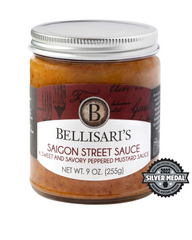
Today, balsamic vinegar is well-known to cooks around the world and available to shoppers everywhere. It can sell for as much as $200 an ounce, or as inexpensively as three dollars for a 16 ounce bottle. But how can one vinegar offer such a dramatic price range? The answer, of course, is that there isn't just one balsamic vinegar. Fortunately, with just a bit of work, understanding the differences isn’t all that difficult.
Traditional balsamic vinegar is the granddaddy of balsamic vinegars. To this day it is only made in Reggio Emilia and Modena, Italy, using traditional methods. Production is overseen from beginning to end by a special certification agency.
Traditional balsamic vinegar begins with grape must —whole pressed grapes complete with juice, skin, seeds, and stems. The must from sweet, white, locally grown, and late-harvested grapes —usually Lambrusco or Trebbiano varieties— is cooked over a direct flame until concentrated by roughly half; then it’s left to ferment naturally for up to three weeks, and then matured and further concentrated for a minimum of 12 years in a "batteria," or five or more successively smaller aging barrels. These barrels are made of different types of wood such as oak, chestnut, cherry, juniper, and mulberry, so that the vinegar can take on the complex flavors of the casks.
Once a year the vinegar is bottled from the smallest cask in the sequence. Each cask is then topped up with vinegar from the next cask up, with the largest cask getting filled with the new yield. None of the casks are ever completely drained. This aging process is similar to the solera process used for fine sherries, ports, sweet wines, and Spanish brandies. The vinegar gets thicker and more concentrated as it ages because of evaporation that occurs through the walls of the barrels—the vinegar in the smallest barrel will be much thicker and more syrupy than the liquid in the successively larger barrels.
Because of the multi-barrel process, it would take complex math to gauge the average age of the bottled product, so instead a tasting commission of five expert judges convenes to taste the vinegars and determine an appropriate grade, and no age is printed on the label. In Reggio Emilia, traditional balsamics are graded affinato (fine), with a red cap, which roughly corresponds to a 12-year vintage; vecchio (old), with a silver cap, which roughly corresponds to a 15-20 year vintage; or extra vecchio (extra old), with a gold cap, which roughly corresponds to a 20-25 year vintage. In Modena there's just affinato, with a white cap, or extra vecchio, with a gold cap.
- Color and Texture: Traditional balsamic vinegar is glossy, viscous, and dark brown, though it captures light beautifully. It moves like syrup, and has a velvety texture on the tongue.
- Flavor: A rich, complex sweetness that explodes in the mouth with notes of fig, molasses, cherry, chocolate, or prune. Traditional balsamic should pick up the flavors of the wood it matured in, and may have a slight smokiness. It offers a mellow tartness rather than a strong acidity.
- Storage: Traditional balsamic vinegar will keep indefinitely, but store in a cool, dark place to best preserve the complexity of its flavors, and keep away from other pungent ingredients. Balsamic vinegar will not continue to mature in the bottle.
Traditional balsamic is sold in wax-sealed bottles with unique identifying numbers. Traditional balsamic from Modena is only sold in a bulb-shaped 100ml bottle. If it's from Reggio Emilia it's only sold in a 100ml bottle shaped like an inverted tulip. If it's from anywhere else, it's not traditional balsamic vinegar.
- Use: Traditional balsamic is not a cooking ingredient — heating it will kill its distinctive bouquet — and it would be wasted as an ingredient in a salad dressing. Instead, use it where it can shine. Try putting a few drops on fresh berries, Parmigiano-Reggiano cheese, or creamy desserts like panna cotta, zabaglione, or vanilla ice cream. Traditional balsamic can be used at the end of the cooking. It's excellent drizzled over traditional veal scaloppine, a rich risotto, or the Italian stew bollito misto. It's also great over grilled meats and seafood. Add about a teaspoon per person just before serving to get the best of its flavor.
In Italy really good balsamic is also drunk as a palette cleanser, aperitif or digestif, especially on special occasions such as weddings. The name "balsamic" connotes the vinegar's original use as a tonic, or "balm."
At Bellisari’s, we recognize this delicacy as the delicious condiment and accompaniment that it is – so much so that our Balsamic, Shallot, and Black Garlic Spread is award-winning in its category from The Specialty Food Association’s sofi™ Awards which have been honoring the best in specialty food for 48 years. In 2021, they recognized us as winners. Specifically, in the category of salsas & dips, the amazing Bellisari's Balsamic Shallot & Black Garlic Spread won GOLD!






